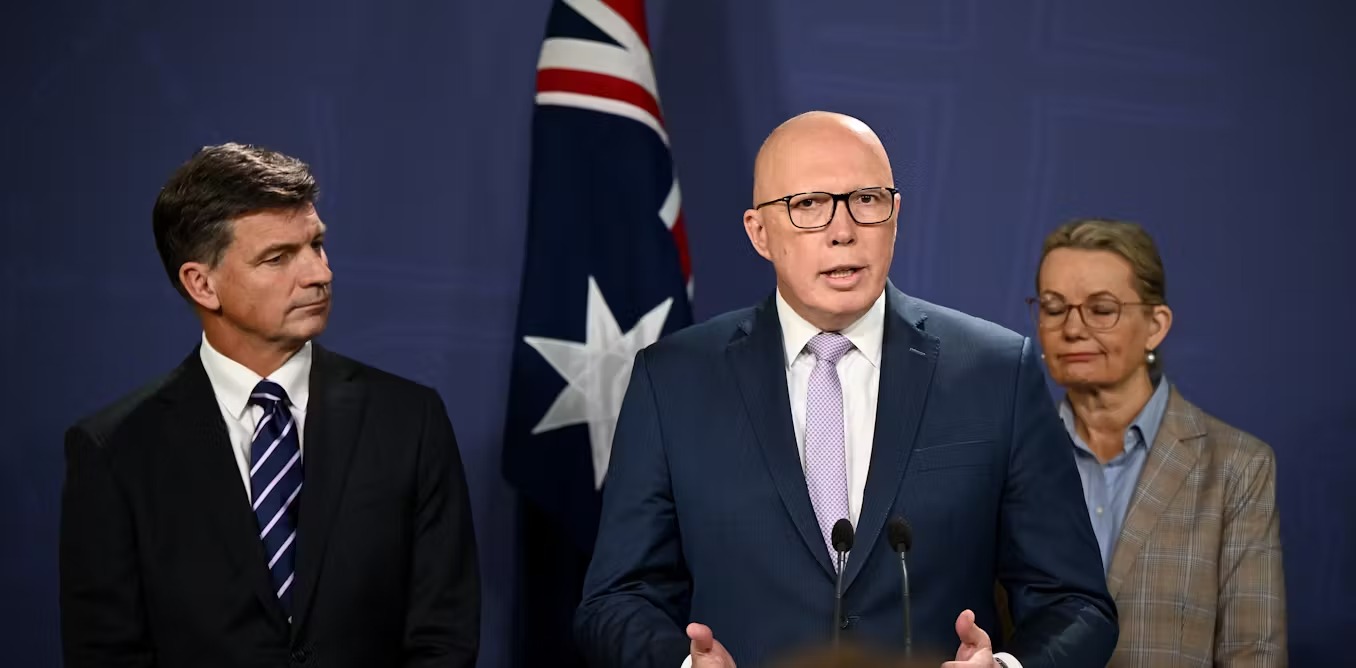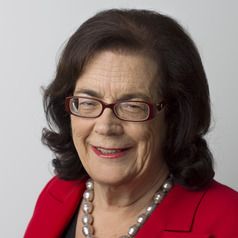Opposition leader Peter Dutton has announced seven sites for reactors, unveiling his long-awaited and highly-controversial policy for nuclear power with the claim it could start operating from the 2030s.
The locations are the sites of former or current coal plants. They have the technical attributes needed for a nuclear plant, including transmission infrastructure, cooling water capacity and a skilled workforce, the opposition policy says.
The program would consist of two phases, starting with two establishment projects in the mid-2030s followed by a build of others through to 2050.
Most sites would have larger reactors, with two – in South Australia and Western Australia – having small modular reactors. All mainland states would eventually have reactors.
The proposed sites are
-
Liddell Power Station, New South Wales
-
Mount Piper Power Station, New South Wales
-
Loy Yang Power Stations, Victoria
-
Tarong Power Station, Queensland
-
Callide Power Station, Queensland
-
Northern Power Station, South Australia (small modular reactor only)
-
Muja Power Station, Western Australia (small modular reactor only)
Dutton said the generators would be owned by the Commonwealth government.
The first could begin operating in 2035 if small modular reactors are used, or 2037 “if modern larger plants are found to be the best option”, the opposition says.
This is much earlier than the CSIRO has estimated that an initial plant could begin.
The CSIRO said in its May assessment of generation technology costs for Australia, that “due to the current state of the development pipeline in Australia, that the earliest deployment would be from 2040”.
Dutton said he would be “very happy for the election to be a referendum on energy, on nuclear, on power prices, on lights going out, on who has a sustainable pathway for our country going forward”.
“We are going to the next election seeking a mandate from the Australian people, a very clear mandate that we want support to modernise our energy system … which is about economic growth and jobs for decades and generations to come,” Dutton said. said.
This is the concept design of a zero emissions small modular reactor.
— Peter Dutton (@PeterDutton_MP) June 19, 2024
Nuclear energy has proven to get electricity prices and emissions down all over the world.
Out of the world’s 20 largest economies, Australia is the only one not using nuclear energy or moving towards it.… pic.twitter.com/BN00QxQMmd
The opposition says the timeline for nuclear energy including building two establishment projects is ten to 12 years, “from the government making a decision until zero-emissions nuclear electricity first enters the grid”.
The Coalition policy says a key advantage of the nuclear energy plants was they could be plugged into existing grids. “This means they can effectively replace retired or retiring coal plants and avoid much of the new spending needed for Labor’s ‘renewables-only’ system, including new transmission poles and wires.”
The government would partner with nuclear companies from aboard on development and operation.
Each community around a site would receive a benefits package enshrined in legislation.
It would include:
-
multi-billion dollar facility guaranteeing high-paying jobs for generations to come
-
an integrated economic development zone attracting manufacturing, value-add and high-tech industry
-
a regional deal unlocking investment in modern infrastructure, services and community priorities.
Establishing a civil nuclear programme would require an expanded Australian Radiation Protection and Nuclear Safety Agency to license and regulate the power stations, a Nuclear Energy Coordinating Authority, and a government business enterprise to be called Affordable Energy Australia.
Dutton could not give a cost for the nuclear plan, saying only it would be “a fraction” of the government’s energy transition plan costing $1.2 trillion to $1.5 trillion. He said the opposition would have more to say on cost “in due course”.
The opposition leader announced his plan at a news conference in Sydney, after a pre-budget announcement had been deferred. He was flanked by a bevy of colleagues including Nationals leader David Littleproud.
Treasurer Jim Chalmers said in a social media post: “With Australia’s advantages and opportunities, nothing could be more economically irrational or fiscally irresponsible” than the nuclear policy".
This economic vandalism we see on energy from the Coalition should be disqualifying for a major party seeking to govern.
— Jim Chalmers MP (@JEChalmers) June 18, 2024
Chalmers told the ABC: “Peter Dutton’s nuclear negativity is economic insanity, pure and simple. Nuclear takes longer, it costs more and it will squander Australia’s unique combination of advantages”.
Apart from a fierce campaign from federal Labor, Dutton faces attacks from the states. His plan is opposed by the Liberal-National opposition in Queensland where there is a state election within months.



 Oil Prices Rebound as U.S.-Venezuela Tensions Offset Oversupply Concerns
Oil Prices Rebound as U.S.-Venezuela Tensions Offset Oversupply Concerns  U.S. Stock Futures Mixed as Tech and AI Stocks Face Pressure Ahead of CPI Data
U.S. Stock Futures Mixed as Tech and AI Stocks Face Pressure Ahead of CPI Data  China’s Small Bank Consolidation Struggles as Profits Fall and Risks Persist
China’s Small Bank Consolidation Struggles as Profits Fall and Risks Persist  BOJ Expected to Deliver December Rate Hike as Economists See Borrowing Costs Rising Through 2025
BOJ Expected to Deliver December Rate Hike as Economists See Borrowing Costs Rising Through 2025  Japan Business Sentiment Hits Four-Year High, Boosting Expectations of BOJ Rate Hike
Japan Business Sentiment Hits Four-Year High, Boosting Expectations of BOJ Rate Hike  Gold Prices Dip as Markets Absorb Dovish Fed Outlook; Silver Eases After Record High
Gold Prices Dip as Markets Absorb Dovish Fed Outlook; Silver Eases After Record High  ASX Shares Slide After ASIC Imposes A$150 Million Capital Requirement
ASX Shares Slide After ASIC Imposes A$150 Million Capital Requirement  Russia Stocks End Flat as Energy and Retail Shares Show Mixed Performance
Russia Stocks End Flat as Energy and Retail Shares Show Mixed Performance  Korea Zinc Plans $6.78 Billion U.S. Smelter Investment With Government Partnership
Korea Zinc Plans $6.78 Billion U.S. Smelter Investment With Government Partnership  South Korea Extends Bond Market Stabilization Measures Amid Rising Financial Risks
South Korea Extends Bond Market Stabilization Measures Amid Rising Financial Risks  Dollar Struggles as Markets Eye Key Central Bank Decisions and Global Rate Outlooks
Dollar Struggles as Markets Eye Key Central Bank Decisions and Global Rate Outlooks  Global Markets Slide as Tech Stocks Sink, Yields Rise, and AI Concerns Deepen
Global Markets Slide as Tech Stocks Sink, Yields Rise, and AI Concerns Deepen  China’s November Economic Data Signals Slowing Industrial Output and Weak Consumer Demand
China’s November Economic Data Signals Slowing Industrial Output and Weak Consumer Demand  Ireland Limits Planned Trade Ban on Israeli Settlements to Goods Only
Ireland Limits Planned Trade Ban on Israeli Settlements to Goods Only  Gold Prices Slip Slightly in Asia as Silver Nears Record Highs on Dovish Fed Outlook
Gold Prices Slip Slightly in Asia as Silver Nears Record Highs on Dovish Fed Outlook  Asian Currencies Hold Steady as Indian Rupee Slides to Record Low on Fed Outlook
Asian Currencies Hold Steady as Indian Rupee Slides to Record Low on Fed Outlook 
































